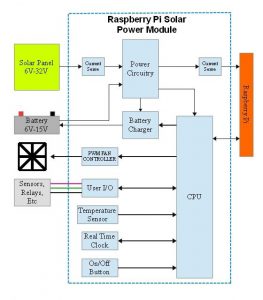Overview
The Raspberry Pi Solar Power Module is a compact power controller for the Raspberry Pi. It has everything a Pi needs for remote deployments including a solar panel interface, battery backup and charging, analog to digital inputs, a PWM fan controller, and a real time clock for accurate time keeping and wake up from sleep.
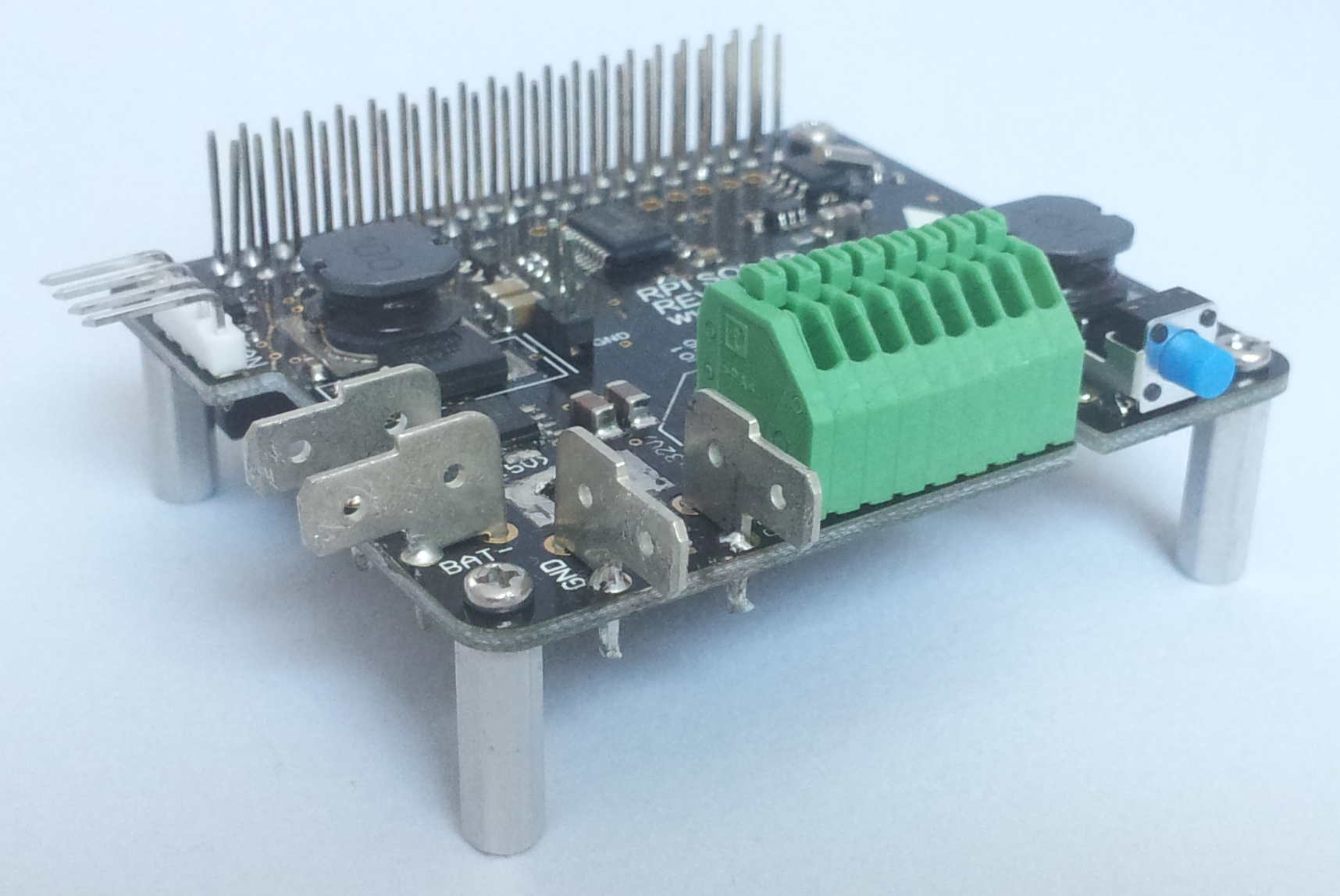
Applications
-
Remote Sensing and Telemetry
-
Remote Video Capture and Security
-
Robotics
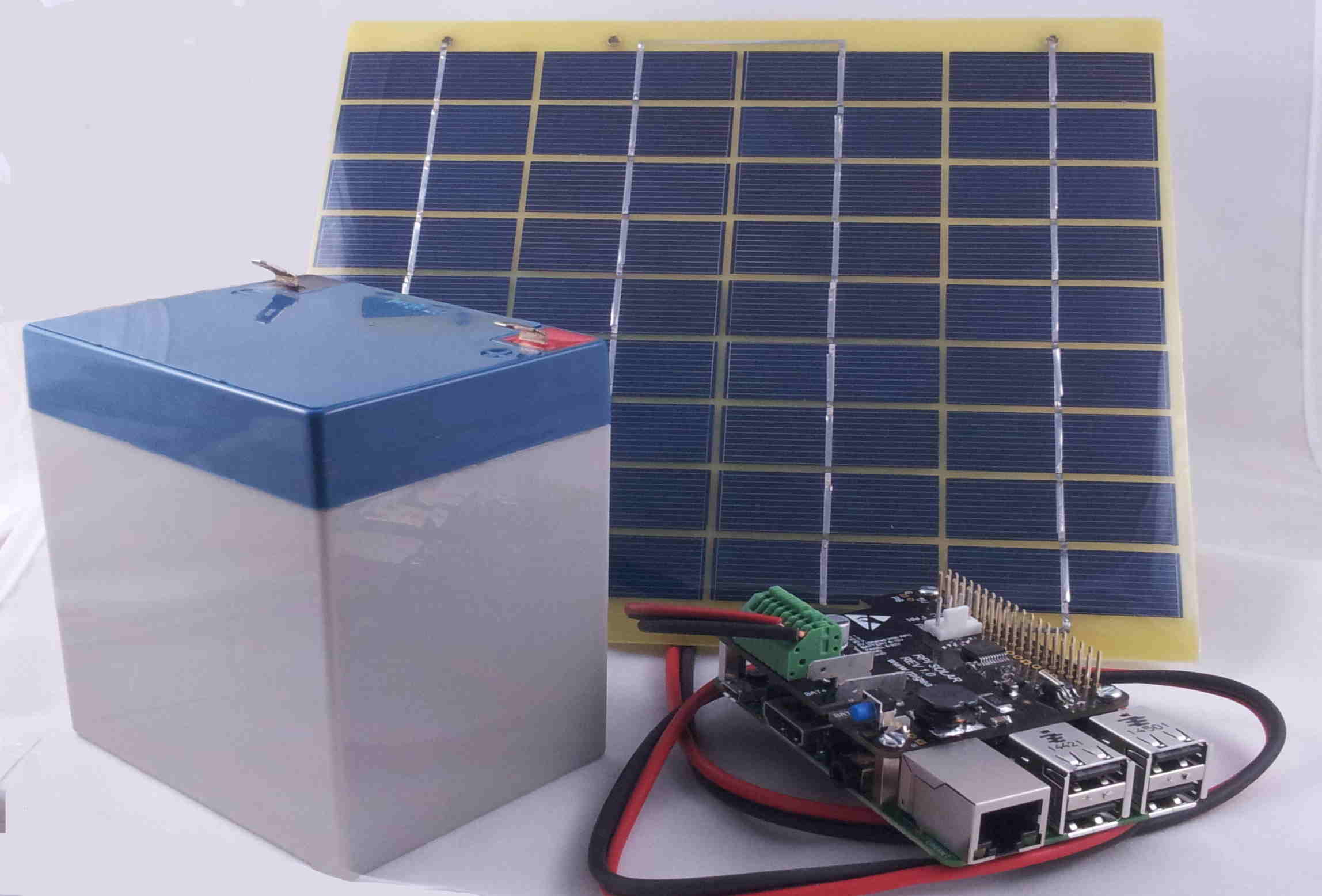
Main Features
-
Wide input range solar panel interface, 6V-32V
-
Flexible battery interface and charger, 6V-15V.
-
Automatic switching and sharing between solar panel and battery, allows solar panel to supplement battery during overcast periods, or take over completely in low light conditions.
-
Real time clock for accurate time keeping, programmable low power sleep and wake up alarm.
-
4 pin pwm fan controller
-
5 analog to digital converter inputs, also configurable as digital I/O
-
Temperature sensor
-
Real time sensing of solar panel voltage, battery voltage, and Rapsberry Pi 5V current.
-
Stackable Architecture(other add on boards can be added on top), configurable i2c address
Downloads
Datasheet
User Manual
Quick Start Guide
Linux Software 2.2 2.3
Purchasing
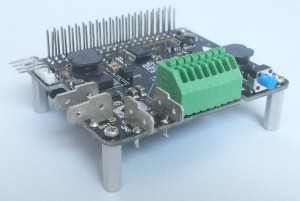
- Solar Power Module for Raspberry Pi
- Mounting Hardware(fem/fem standoffs x 4, M2.5 screw x 8)
- quick connect crimp terminals(4 pieces)
- Note: Solar Panel, Battery, and Raspberry Pi are not included.
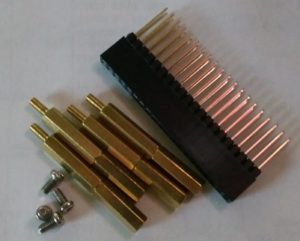
- Stacking hardware to connect multiple temperature readout boards
- 4 x male/female extra tall m2.5 standoffs
- 20x2 male female stacking connector
- Part# RPI-STK-KIT-1
FAQ
Which versions of the Raspberry Pi are supported ?
What types of batteries are supported ?
Can I connect the Solar Panel port to something else besides a solar panel ?
Will batteries still be charged while the system is in sleep mode and the Raspberry Pi is off ?
What is the real time clock used for ?
How should I select a solar panel and battery for my project ?
Which versions of the Raspberry Pi are supported ?
PI 1 Model A+, PI 1 Model B+, PI 2, Pi Zero, PI 3, Pi 4.
What types of batteries are supported ?
The type of battery doesn't matter, as long as the voltage is between 6V and 15V. If battery charging is to be enabled, the battery must be chargeable and must be able to handle at least 1A of charging current.
Can I connect the Solar Panel port to something else besides a solar panel ?
Yes, the solar panel input can be connected to anything that outputs DC voltage in the specified range. For example an AC/DC power supply, wind turbine, or another battery. The output power of this source is not critical, the solar module will take as much power as is available.
Will batteries still be charged while the system is in sleep mode and the Raspberry Pi is off ?
Yes, the charger works even when the Raspberry Pi is off. All the power coming from the solar panel will go towards charging the battery. Furthermore, the solar module can be configured to either turn the Pi back on after a preset time period, or when the battery is charged to a specified level.
What is the real time clock used for ?
The real time clock is a low power time source. It's mainly used in applications that periodically wake up to do some work, then go back to sleep for a while. For example the Raspberry Pi would program the real time clock to wake up in 1 week, then tell the solar module to turn power off and go to sleep. The system would sleep using very little power, any extra energy from the solar panel would go towards topping up the battery, then in one week's time the alarm would turn the whole system back on again.
How should I select a solar panel and battery for my project ?
There is no quick answer because it depends on many factors such as solar panel output power, mounting angle related to the sun, average sunlight per day, system power usage, on/off time ratio, etc.
As a safety net for unforeseen events, the system can be programmed to go to sleep to allow the a depleted battery to get recharged. The solar module would then turn power back on after the battery charge reaches a preset level, or after a specified time period. This allows remote systems to keep operating during long stretches of low light condition, or as the battery ages and/or solar panel loses efficiency because of dirt or obstructions.
